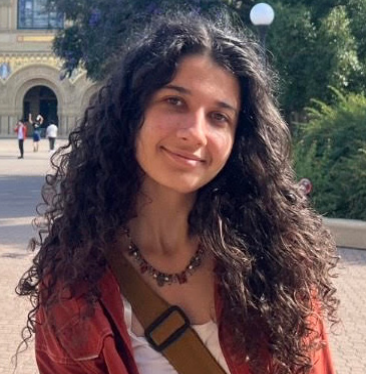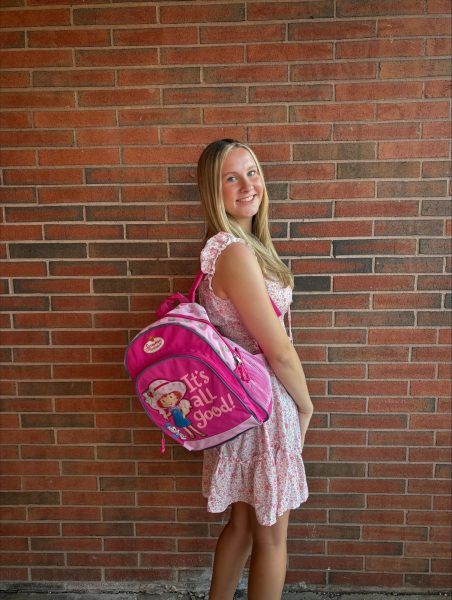Freshman Noah Berkowitz
- “I learned a lot about lab safety. This really prepared me for the class and helped me go into it knowing a lot of things.”
Freshman Amelia Kolasinski
- “I went to the second week of the [LHS] summer research program. In this program, we explored the lab area, learned what all the materials are, where everything is, and saw a lot of our DNA in various ways, which was super cool. We also played Pictionary a lot. I had fun meeting new people.”
Sophomore Olivia Ramirez
- “I grew tomatoes with different amounts of water varying from 0% to 100% water with a dilution factor of 1/5. This project was very interesting and taught me more about agriculture.”
Junior Elin Kim
- “I volunteered at our high school’s summer research program for rising freshmen, along with Aidan Michaels and Jack Murray.”
Junior Dilnoor Nijjar
- “I went on vacation to India for the whole three months. I aimed to explore health care and science-related opportunities, but I encountered some challenges due to child labor laws that restricted my ability to work in hospitals and labs. Despite these obstacles, I was lucky enough to volunteer for the World Cancer Care Charitable Society and Humanity First’s charity event. During my time with these organizations, I assisted in organizing and conducting health care camps in underserved rural areas of India, focusing on cancer screenings and eye care.”
Junior Joaquin Martin
- “For my summer research experience, I conducted an experiment on bleach, hand sanitizer, and dish soap on E. coli and Alcalifaciens. I grew these bacteria strains on three agar plates each, then sprayed each of the disinfectants on their respective agar plate. Over each data day, I determined how many bacteria colonies died, and what happened to the average colony size (if it increased or decreased). For my results with the colony sizes, from greatest to least, bleach killed the most bacteria colonies for all groups, then came the hand sanitizer, and lastly, the dish soap.”
Junior Leah Pisano
- “I did a course via Coursera about genomics. It was 36 hours long and took me about a month to complete. I learned about the different aspects of genomics, or the study of all DNA in an organism that makes up its genome.”
Junior Ella Caroll
- “I did a course called Immunology: Immune Failures and Cancer Immunology that explored various biological aspects of the immune system and how they may interact with/cause certain types of cancers or create an environment where tumors are able to thrive.”
Senior Kate Santoli
- “This summer, I worked with the Lab for Youth Trauma Recovery at Hofstra University. I learned about the effect of childhood trauma on mental health, the barriers that prevent minority groups from receiving mental health service, and community-based participatory research. I worked on making recruitment flyers, organizing project proposals, and visiting public libraries to actively recruit participants.”
Senior Eric Reilly
- “I worked in an organic chemistry lab at Hofstra University. I was part of the lab’s ongoing research in testing optimal conditions for the photocatalytic oxidation of benzyl alcohols. My mentor gave me opportunities to test any variables I was interested in, including wavelengths of light, solvents, catalysts, and even secondary and tertiary alcohols. I plan to continue my research throughout the school year to further improve the optimal mechanism for the reaction.”
Senior Kelsey Roth
- “Over the summer, I contributed to Dr. Fernando Espinoza’s Lab in the Hofstra Summer Science Research Program. I collected data for the project titled, “Detection and Measurement of Exposure in Physical Science: Particulate Matter (PM) pollution, and Radio Frequency (RF-EMF) Cell Phone Radiation.” For this lab, I collected particulate matter pollution using an air sensor and cell phone radiation utilizing a faraday cage to determine these impacts on the environment of Long Island. I also worked alongside my mentor, Dr. Brian Helmuth, at Northeastern University. For this project, I deployed temperature sensors on the shores of estuaries on Long Island and collected data to determine the differences in temperature at these locations.”
Senior Simon Yu
“Continuing off my project from last year, I aimed to track the flow of material from the carbon-nitrogen-oxygen cycle (CNO cycle) up to Calcium-40….I used custom thermodynamic profiles that I created, and the simulation software CINA, but I was unable to observe this flow because there was a bug that hid it. Until this bug was fixed, I worked on other aspects of my research. Using a MATLAB suite, I created a 3D scatterplot showcasing the coordinates of reaction rate, temperature, and density on the XYZ plane respectively….By using MATLAB, I was able to create this ‘4D’ representation with an old data set I had from previous research.”
Senior Erick Diaz
- “Over the summer, I went to the Feinstein Institutes for Medical Research in Manhasset and worked in the department that studied Alzheimer’s and Parkinson’s disease. I worked with my mentor on a project where I studied patterns of brain atrophy in the MRI scans of different patients from an online database. I engaged in different obstacles with my project and attended lectures with other high school researchers. This experience helped me learn a lot and find a passion in my research focus.”


















